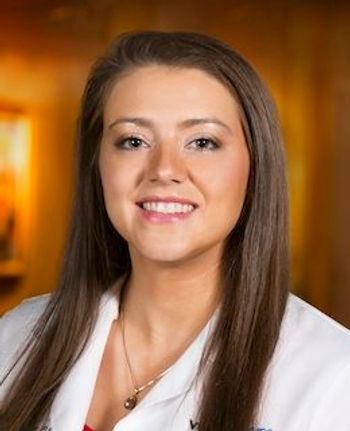
How to reduce vision impairment, promote eye health
The American healthcare system is failing eye care
Anaheim, CA-The American healthcare system is failing eye care.
This is particularly true when the poor public awareness of vision health concerns are considered. But according to Lori Grover, OD, PhD, FAAO, ODs have a significant role to play in righting the ship.
“We need to expand the clinical research emphasis outside of the traditional vision science, and optometrists need to embrace the science of healthcare delivery,” she says in a lecture at the American Academy of Optometry annual meeting in Anaheim, CA.
Collaborating on public health
Dr. Grover reviewed a recent report from the National Academies of Sciences, Engineering, Medicine (NASM), regarding the state of vision health in the U.S. that included:
• The public health burden of eye disease and vision loss
• Understanding prevention and care of eye disease
• Strategies to promote vision and eye health in the public sector
Nobody can be in a silo anymore, she says, emphasizing the importance of collaboration in addressing these concerns.
“Understanding how to work efficiently, not only with our colleagues in ophthalmology and in public health but also at the national level is very important,” she says.
Broadly, the NASM’s report sought to answer questions regarding how disparities in eye and vision care could be reduced. The report also questioned how to effectively raise awareness of vision health concerns and provide better access to services.
Related:
Recommendations from the NASM
Dr. Grover outlined nine primary recommendations suggested in the NASM’s report.
1. Ask the Secretary of Health and Human Services (HHS) to issue a call to action
Awareness of vision impairment public health concerns are poorly understood in the U.S. A public call to action may ignite a push toward change.
2. Suggest agencies launch a coordinated public health campaign
Dr. Grover says that according to past research, the number-one sensory experience that people are afraid to lose is their vision.
So why, then, do people’s actions not reflect this value?
According to Dr. Grover, much of this is due to the lack of public awareness of vision concerns. There is a need to bring awareness on multiple fronts-from individual employers to federal agencies, from the secretary of HHS to nonprofit organizations-all sides must coordinate in a broad public health campaign.
3. Propose Centers for Disease Control and Prevention develop a coordinated surveillance system for eye and vision health
The profession suffers from a lack of cohesion in visual data collection.
“Believe it or not, we do not have one effective national surveillance system to go to and say, ‘I want the data on how many people have this.’ We don’t know this,” says Dr. Grover.
She suggests a multidisciplinary, collaborative approach to address standardizing definitions, examining risk factors, and generating concrete data for distribution.
4. Ask HHS to create an interagency work group to develop common research agenda
This strategy involves a dedicated team that examines the causes, consequences, and unmet needs of vision impairment.
“The agenda for this particular research common approach needs to be focused on population-based, epidemiological and clinical research,” says Dr. Grover.
She says it’s important provide research that offers concrete outcomes. Although there isn’t much money available to study vision loss, funding must be used efficiently.
Related:
5. Suggest HHS convene representative panels to develop single set of evidence-based clinical guidelines
The challenge lies with how different departments utilize evidence.
“Guidelines are really important for a lot of reasons,” Dr. Grover says.
Clinical evidence is often used to standardize best practices and draw up payment policies. This is especially true in optometry, according to Dr. Grover.
6. Create professional education programs that proactively recruit and educate a diverse workforce
Today’s students will be shaping the future of optometry, Dr. Grover says, and they need to have public health, population health, and healthcare delivery built into education along with post-graduate training.
Diversity of experience and education will contribute to a better decision-making, both in individual practices and in the industry as a whole.
7. Call on state and public health departments
ODs must work outside of their practices with policy-makers when advocating for public awareness of vision health concerns.
Dr. Grover says that public health committee members are as eager as optometrists to enact positive change in eye care and get citizens more invested in their visual health.
8. Ask that the CDC to prioritize its vision grant program
This recommendation involves evaluating policies that increase access to care and rehabilitation care for vision loss from the CDC as well as the National Institute of Health (NIH).
“We want there to be a research agenda with all stakeholders buying into it,” she says.
9. Call on communities to work with state and local health departments to translate initiatives into actions
Broad health initiatives must turn into specific, well-defined, actionable goals. These initiatives involve, in part, improving awareness across communities, engaging with communities to make awareness a part of daily life, and working with policy-makers to enact laws that support safety.
Related:
5 strategies for action
After reviewing each of the NASM’s recommendations, Dr. Grover listed five strategies that optometric professionals could use to turn these ideas into realities.
1. Facilitate public awareness through timely access to accurate and locally relevant information
“We take it for granted because we have it available, we have it in our offices, we give it out, we lecture on it, we go to community groups and talk about it, but how impactful is that outside of those arenas?” Dr. Grover says.
While optometric professionals have easy access to relevant information, the general public may not. It’s the duty of ODs to provide this information through any channels they can.
2. Generate evidence that guides policy decisions and evidence-based actions
Use tools to help create action from recommendations.
“A really good example of that is that we now have a registry for optometry,” Dr. Grover says.
Registries function as great resources for analyzing outcomes and benchmarking compared to peers.
3. Expand access to appropriate clinical care
Public health initiatives, such as infancy programs, help ensure that specific groups can receive the proper care. As a measure to improve visual health in all populations, these specialized groups are essential for clinical care.
4. Enhance public health capacities to support vision related activities
Tying back in to one of the NASM’s recommendations, Dr. Grover says that public health organizations are invested in working collaboratively with eye health professionals to improve patient outcomes.
Public outreach efforts boost awareness, access to care, and support the integration of visual health into our daily lives.
5. Promote community actions that encourage eye and vision healthy environments
“The recommendation here is looking at a calling to our cabinets, our federal agencies, the White House, and getting this broad national agenda in place,” Dr. Grover says.
Recent changes in government may require increased accountability from all healthcare providers, including optometrists.
Improving health one day at a time
The road to a stronger healthcare system will take time. There are many unknowns, and many barriers to face.
“This is a longitudinal challenge because we’re not going to have immediate benefits,” she says. “Addressing the research gaps is huge. We need to make sure we strengthen foundational evidence for best practices.”
Although the road to change is long, ODs are in a good position to strengthen patient outcomes, their local communities, and their own practices through better public outreach.
Related:
Newsletter
Want more insights like this? Subscribe to Optometry Times and get clinical pearls and practice tips delivered straight to your inbox.


















































.png)


